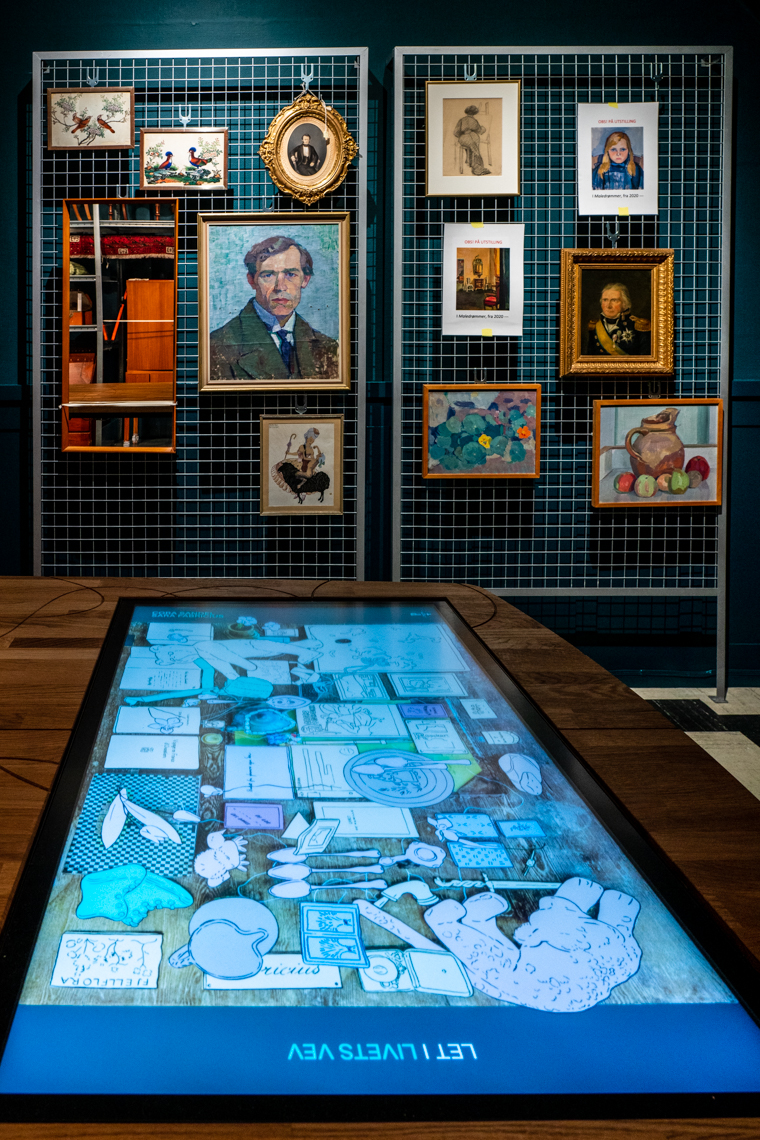In the museum’s storage facility, objects are preserved side-by-side on shelves; organised according to materials, size, and shape. They’re registered and catalogued, and can be retrieved in computer systems through scanning barcodes or entering ID-numbers. But only when PEM.116 is linked to lived life, and to people and environments, is it able to tell us something more. As a researcher who fiddled a bit with a Sandel quote once wrote:
Hidden in the external things lies reality.
In Storgata 95, in the part of the house where Sara Fabricius once had her bedroom, we’ve created a visual storage facility for the objects she left behind. Her relationship to things changed throughout her life. From her childhood in late nineteenth century plushly furnished living rooms, through a bohemian existence with short sojourns at many addresses, to when she late in life settled down in a small flat in Uppsala, Sweden. Here, she received family heirlooms from a long-gone upper-class home, but also a seashell from Brittany and a stone from the Telegrafbukta beach in Tromsø .
They look good together. I see them every day and think of places to the south and the north, where I have left large pieces of my heart. (…) As you see, I collect relics.
Through her objects, which many years later came here, to the house where some of them used to be, connections and possibilities are created. Come inside and discover how time, place, roles, people, and artistic practice can be woven together in the Tapestry of Life.
Like a museum storage space, Traces of Sara will be changing continually throughout the exhibition period. Repeat visits may provide new experiences. Welcome!






Exhibition production
The exhibition is supported by Samfunnsløftet Sparebanken Nord-Norge og Tromsø kommune.
The exhibition would not have been possible without a very generous gift from Sara Fabriciu´s heirs and Janneken Øverland´s biographical work.
Concept and contents: Marianne A. Olsen & Marthe T. Fjellestad
Exhibition design: Marthe T. Fjellestad
Collaborating artist & installations: Lawrence Malstaf
Producers: Mari Hildung & Aslaug Eidsvik
Exhibition manager: Marianne A. Olsen
Collection Manager: Ingunn Steiro
